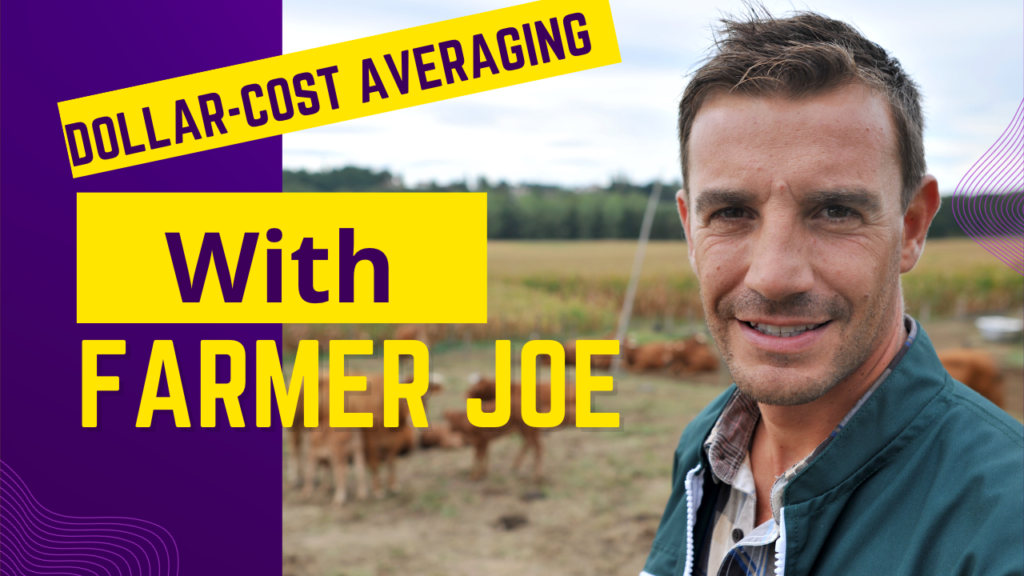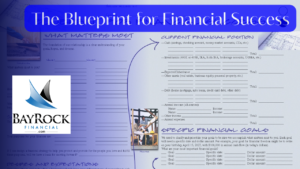Dollar-Cost Averaging for Maximum Returns and Minimal Risk
Table of Contents:
-
Introduction to Dollar-Cost Averaging
-
What is Dollar-Cost Averaging?
-
How Does Dollar-Cost Averaging Work to Maximize Returns and Minimize Risks Over Time?
-
The Benefits of Dollar-Cost Averaging
-
The Farmer Joe Example: A Practical Illustration of Dollar-Cost Averaging
-
Conclusion
Introduction to Dollar-Cost Averaging:
Investing can be a great way to build wealth over time, but it also comes with risks. One way to mitigate those risks while maximizing returns is through dollar-cost averaging. This investment strategy involves investing a fixed amount of money at regular intervals, regardless of the current price of the asset. Here’s how it works.
What is Dollar-Cost Averaging?
Dollar-cost averaging is an investment strategy that involves investing a fixed amount of money at regular intervals, regardless of the current price of the asset. This means that when the price of the asset is high, the investor buys fewer shares, and when the price is low, they buy more shares. Over time, this helps to even out the average cost per share and reduces the impact of short-term price fluctuations on the overall investment.
How Does Dollar-Cost Averaging Work?
Dollar-Cost Averaging allows you to Maximize Returns and Minimize Risks Over Time.
Dollar-cost averaging works by taking advantage of the natural volatility of the market. By investing a fixed amount of money at regular intervals, investors can buy more shares when the price is low and fewer shares when the price is high. This helps to lower the average cost per share and reduce the impact of short-term price fluctuations on the overall investment.
Over time, dollar-cost averaging can help to maximize returns and minimize risks. By consistently investing over a long period of time, investors can take advantage of the long-term growth potential of the asset while minimizing the risks associated with short-term price fluctuations.
The Benefits of Dollar-Cost Averaging
One of the primary benefits of dollar-cost averaging is that it allows investors to take advantage of the natural volatility of the market. By buying more shares when the price is low and fewer shares when the price is high, investors can lower the average cost per share and reduce the impact of short-term price fluctuations on the overall investment.
Another benefit of dollar-cost averaging is that it is a simple and straightforward investment strategy. Investors can set up automatic investments to occur at regular intervals, making it easy to stay on track with their investment goals.
Meet Farmer Joe
A Practical Illustration of Dollar-Cost Averaging
To illustrate how dollar-cost averaging can work in practice, let’s use the example of Farmer Joe, who wants to invest in cows as a way to diversify his income. He has $100 to invest each month and decides to use dollar-cost averaging to purchase cows. Over a period of 7 months, Farmer Joe purchases cows as follows:
-
Month 1: $100 per cow = 1 cow
-
Month 2: $50 per cow = 2 cows
-
Month 3: $25 per cow = 4 cows
-
Month 4: $20 per cow = 5 cows
-
Month 5: $25 per cow = 4 cows
-
Month 6: $50 per cow = 2 cows
-
Month 7: $100 per cow = 1 cow
At the end of the 7th month, the price of cows has returned to $100 per cow, so Farmer Joe decides to sell all his cows. Here’s how his investment and profit look:
Investment:
Farmer Joe invested $700 in total, with $100 invested each month for 7 months. Wait, that’s not a cow!!
Profit:
When Farmer Joe sells all his cows, he earns a total of $1,900, selling each cow at $100 per cow. That’s a profit of $1,200.
What IF:
But what if Farmer Joe had purchased all his cows in the first month, when the price was $100 per cow? In that case, he would have been able to purchase only 7 cows with his $700 investment. When he sells those cows at $100 per cow, he earns a total of $700, making no profit.
This example demonstrates the power of dollar-cost averaging. By investing a fixed amount each month, regardless of the price of cows, Farmer Joe was able to buy more cows when the price was low and fewer cows when the price was high. This helped him to lower his average cost per cow and maximize his profits when he sold them.
How much did Farmer Joe pay for each cow on average?
To calculate this, we can divide the total amount he invested ($700) by the total number of cows he owned at the end of the 7th month (19 cows). This gives us an average cost per cow of $36.84.
Conclusion
Dollar-cost averaging is a simple and effective investment strategy that can help investors maximize returns and minimize risks over time. By investing a fixed amount of money at regular intervals, regardless of the current price of the asset, investors can take advantage of the natural volatility of the market and lower their average cost per share.
The Farmer Joe example illustrates how dollar-cost averaging can work in practice, allowing investors to buy more shares when the price is low and fewer shares when the price is high. This helps to maximize profits and reduce risks associated with short-term price fluctuations.
If you’re looking to invest in the market, consider implementing a dollar-cost averaging strategy to help you reach your investment goals over the long term.


















